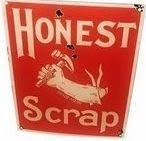Yesterday, October 30, 2009, I saw three flocks of Sandhill Cranes flying south over our place. They were at a height of about 1500-2000 feet. Each flock contained about fifty cranes. A trilling call among the flock signals they are in the air. The Sandhill Crane call is almost like a cat’s purr, only higher in pitch.
As a side note, also yesterday, I heard crows screeching on the Dooley’s place to the west of us. I looked up and saw four or five crows chasing and harassing a large red-tailed hawk out of the sky. The crows would fly almost directly into the body of the hawk, pushing him outward to the east over our place. The crows relented and the hawk flew overhead, towards the east, emitting a high whistle of a call as it flew. We have several hawks on our place and I doubt that they will survive the great and mighty hunters of Kentucky that seem to descend on neighboring farms during this season. Yes, mighty hunters that disrespect wildlife and kill wildlife with powerful rifles while sitting in deer stands in their polyester coats, sipping whiskey. The hawks, deer, fox, and other critters know that when they are on the Matthews place, they are safe.
I don’t condemn the man or woman that must take a life for food. But take a life for trophy or brag is disrespectful and that life taken and not respected or honored in its death will come back on that man or woman in their dreams and thoughts until the day they die. Killing fields exist off of the high ground of warfare.
Several years ago, circa 1975, Charles Fairweather, Selden Hale, and I went to Muleshoe, Texas, to get up early in the morning and hunt Sandhill Cranes at the wildlife refuge. We weren’t that serious in hunting them; it was more of chance to leave Amarillo for the night. That next morning, we loaded up on flatbed trailers, about 50-60 hunters per trailer, and drove out to the refuge. We crouched about 300 yards from where the cranes were spending the night. The chatter of the cranes in the dark was peaceful and lulling. The three of us began to regret our hunt. When daybreak occurred, the cranes began to fly, and most hunters could not reach the altitudes with their shotguns at which the cranes flew. The cranes would circle higher and higher before they flew over the mighty hunters of Kentucky. I saw only one crane killed. A hundred to two-hundred hunters, killing one crane, and it would not be eaten. Neither Charles, nor Selden, nor I fired a shot. We went back to Amarillo and ate lunch, saying little about the morning’s early light.























